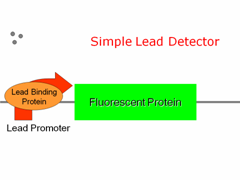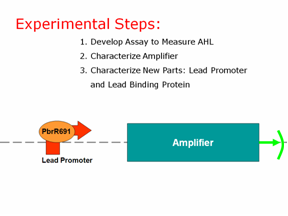Lead
From 2007.igem.org
| (22 intermediate revisions not shown) | |||
| Line 1: | Line 1: | ||
| + | __NOTOC__ | ||
<!-- | <!-- | ||
| Line 5: | Line 6: | ||
| - | + | LOOK FOR "PLACE CONTENT IN HERE" BELOW | |
| Line 15: | Line 16: | ||
<html> | <html> | ||
<style> | <style> | ||
| - | |||
| - | |||
| - | |||
a:link{ | a:link{ | ||
| Line 55: | Line 53: | ||
} | } | ||
| + | body { | ||
| + | margin:0px 0px 0px 20px | ||
| + | } | ||
| + | |||
td { | td { | ||
padding: 3px 0px 0px 0px; | padding: 3px 0px 0px 0px; | ||
| Line 76: | Line 78: | ||
<table border=0 cellspacing=0 cellpadding=0> | <table border=0 cellspacing=0 cellpadding=0> | ||
<tr> | <tr> | ||
| - | <td> | + | <td width=99> |
<a href="Brown"><image src="https://static.igem.org/mediawiki/2007/2/20/Home_reg.gif" alt="Home" border=0></a> | <a href="Brown"><image src="https://static.igem.org/mediawiki/2007/2/20/Home_reg.gif" alt="Home" border=0></a> | ||
</td> | </td> | ||
| - | <td> | + | <td width=99> |
<a href="lead"><image src="https://static.igem.org/mediawiki/2007/5/57/Lead_pressed.gif" alt="Lead Sensor" border=0></a> | <a href="lead"><image src="https://static.igem.org/mediawiki/2007/5/57/Lead_pressed.gif" alt="Lead Sensor" border=0></a> | ||
</td> | </td> | ||
| - | <td> | + | <td width=99> |
<a href="tristable"><image src="https://static.igem.org/mediawiki/2007/c/c5/Tri_reg.gif" alt="Tristable Switch" border=0></a> | <a href="tristable"><image src="https://static.igem.org/mediawiki/2007/c/c5/Tri_reg.gif" alt="Tristable Switch" border=0></a> | ||
</td> | </td> | ||
| - | <td> | + | <td width=99> |
<a href="community"><image src="https://static.igem.org/mediawiki/2007/e/e7/Comm_reg.gif" alt="Community" border=0></a> | <a href="community"><image src="https://static.igem.org/mediawiki/2007/e/e7/Comm_reg.gif" alt="Community" border=0></a> | ||
</td> | </td> | ||
| - | <td> | + | <td width=99> |
<a href="supplemental"><image src="https://static.igem.org/mediawiki/2007/8/81/Supp_reg.gif" alt="Supplemental" border=0></a> | <a href="supplemental"><image src="https://static.igem.org/mediawiki/2007/8/81/Supp_reg.gif" alt="Supplemental" border=0></a> | ||
</td> | </td> | ||
| - | <td> | + | <td width=99> |
<a href="about"><image src="https://static.igem.org/mediawiki/2007/c/ca/About_reg.gif" alt="About us" border=0></a> | <a href="about"><image src="https://static.igem.org/mediawiki/2007/c/ca/About_reg.gif" alt="About us" border=0></a> | ||
</td> | </td> | ||
| Line 101: | Line 103: | ||
</html> | </html> | ||
| - | <!-- | + | <!-- PLACE CONTENT IN HERE--> |
| - | + | ||
| - | --> | + | |
| - | + | '''Click on the title to learn more about each section.''' | |
| - | |||
| + | =[[\Lead Detection | Lead Detection]]= | ||
| + | According to the WHO, 40% of the planet does not have access to clean water. Lead is a serious contaminant around the world. It can cause neurological disorders, anemia, and death. In the United States alone, 3.5 million people have high levels of lead in their blood, so the problem is prevalent in both the developed and developing world. Children under the age of 12 are most at risk for lead poisoning. For more on lead poisoning, click [http://www.aquasanastore.com/water-you_c04.html here]. | ||
| + | |||
| + | [[Image:Inspiration.jpg]] | ||
| + | |||
| + | =[[\Design | Design]]= | ||
| + | Having found a Lead Binding Protein and its corresponding Lead Promoter in the literature, we began to generate a number of ideas for our lead detector design. We began with a simple detector: The lead promoter could be placed in front of Green Fluorescent Protein, GFP. Once lead enters the cell, it activates the Lead Binding Protein, which activates our Lead Promoter, which in turn gives us some GFP output. But we realized that we could make this simple detector much more effective with an amplification circuit. | ||
| + | |||
| + | [[Image:Lead Switch.jpg]] | ||
| + | |||
| + | |||
| + | =[[\Experimental Steps | Experimental Steps]]= | ||
| + | We have three experimental steps to create our final product: | ||
| + | 1. Develop an assay to measure AHL | ||
| + | 2. Characterize our amplifier | ||
| + | 3. Characterize our new parts: the lead promoter and the lead binding protein | ||
| + | [[Image:Experiment.jpg]] | ||
| + | |||
| + | |||
| - | |||
| Line 123: | Line 140: | ||
</table> | </table> | ||
</td> | </td> | ||
| - | <td width=255 bgcolor="#e8e8e8" valign=top align=left> | + | <td style="padding: 5px;" width=255 bgcolor="#e8e8e8" valign=top align=left> |
| + | <img src="http://partsregistry.org/wiki/images/d/db/Buttonaddpart.gif"> | ||
| + | </html> | ||
| + | <strong>Parts added to the Registry:</strong> | ||
| + | |||
| + | [http://partsregistry.org/cgi/partsdb/pgroup.cgi?pgroup=iGEM2007&group=Brown Lead Detection Biobricks] | ||
| + | |||
| + | <strong>Fully characterized 2 existing parts:</strong> | ||
| + | |||
| + | [http://partsregistry.org/Part:BBa_T9002:Experience AHL to GFP Converter (BBa_T9002)] | ||
| + | |||
| + | [http://partsregistry.org/Part:BBa_J37015:Experience Amplifier by Imperial College (BBa_J37105)] | ||
| + | <html> | ||
</td> | </td> | ||
</tr> | </tr> | ||
</table> | </table> | ||
</html> | </html> | ||
Latest revision as of 03:18, 27 October 2007

|

Parts added to the Registry: Fully characterized 2 existing parts: |
||||||||||||||||


